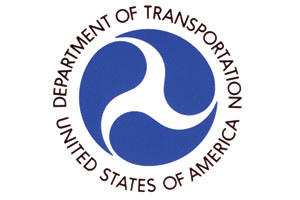Senior Reporter
Drug Testing Labs Slow to Implement Electronic Forms Under New DOT Rule

This story appears in the Nov. 30 print edition of Transport Topics.
Adoption of a federal regulation permitting drug testing laboratories to use faster and cheaper electronic forms has been so slow that the Department of Transportation recently sent out a reminder about the process.
To date, only one drug testing lab, Alere Toxicology Services of Gretna, Louisiana, has been certified to use the electronic chain of custody forms expected eventually to replace five-copy paper documents that accompany urine samples at labs testing truck drivers for illegal drug use.
The new Department of Transportation rule allowing the use of electronic forms was effective April 13.
In a notice issued earlier this month, DOT’s Office of Drug Policy and Compliance reminded employers that they can use electronic forms after labs have been approved by the Department of Health and Human Services National Laboratory Certification Program.
Chain of custody procedures are designed to ensure the integrity of urine specimens from the time they are collected until the testing results are reported.
The process requires that the collection site ensure that every specimen is shipped to a laboratory within 24 hours or during the next business day.
In the final rule, DOT said that when using an electronic chain of custody and control form, labs must establish adequate confidentiality and security measures to ensure that employee records are not available to unauthorized persons.
“This includes protecting the physical security of records, access controls, and computer security measures to safeguard confidential data in electronic form,” the rule said.
Abigail Potter, a research analyst for American Trucking Associations, said third-party companies that expedite thousands of drug tests on behalf of motor carriers are eager to use the electronic process.
“This is something that gets used every single day outside of federal testing and has been in place for years,” she said.
She said the process should have been put in place “years ago.”
“This is just government moving at a snail’s pace,” Potter said.
Scott Taillie, Alere’s vice president of marketing, said most established labs have been using electronic procedures for custody forms for non-DOT drug testing for the past 10 or 15 years, but to use the process, labs must go through the painstaking process of gaining HHS approval, he told Transport Topics.
“It’s pretty cumbersome process to go through,” Taillie said. However, the electronic forms save time and money, are more consistent, eliminate errors and do not require drivers to carry forms. “It’s a much simpler, cleaner process,” he said.
Alere has a network of about 3,500 collection sites throughout the United States that are electronically connected to labs, Taillie said.
David Green, Alere’s Gretna laboratory director, said that to gain HHS approval of the new process, the company had to submit more than 250 pages of information and submit to a special inspection.
“We actually submitted our final document in July, but it took HHS until October to say, ‘Yes, you’ve answered all the questions,’ ” Green said.




